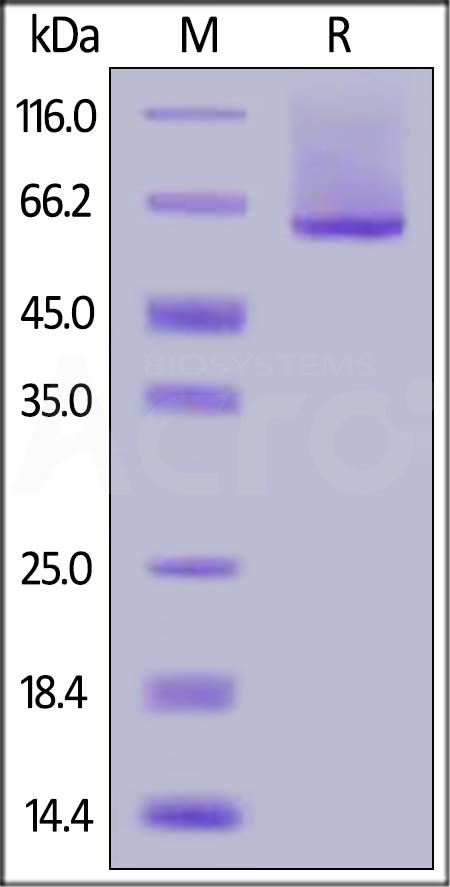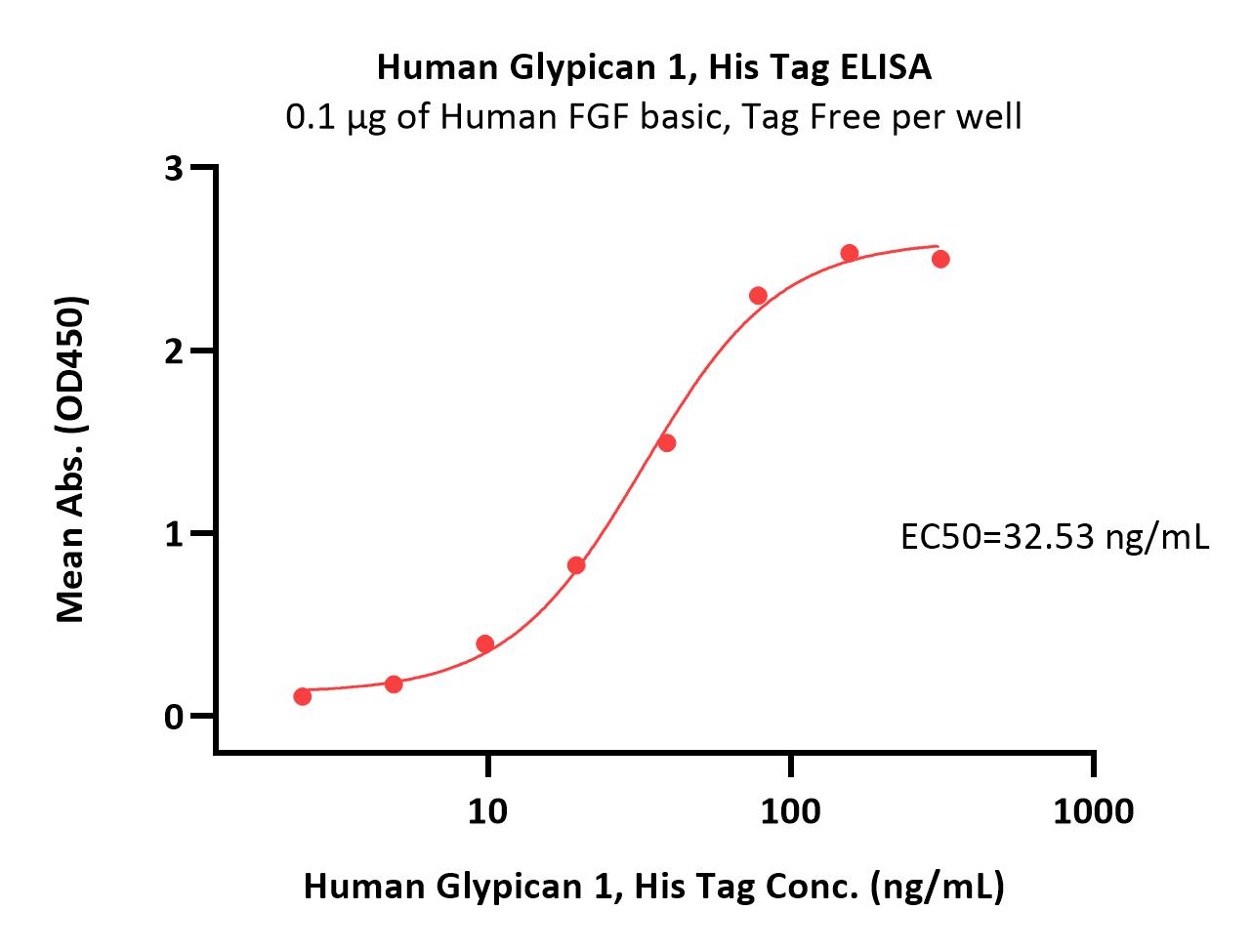分子别名(Synonym)
Glypican 1,GPC1
表达区间及表达系统(Source)
Human Glypican 1, His Tag (GP1-H52H9) is expressed from human 293 cells (HEK293). It contains AA Asp 24 - Ser 530 (Accession # P35052-1).
Predicted N-terminus: Asp 24
Request for sequence
蛋白结构(Molecular Characterization)

This protein carries a polyhistidine tag at the C-terminus.
The protein has a calculated MW of 58.0 kDa. The protein migrates as 60 kDa when calibrated against Star Ribbon Pre-stained Protein Marker under reducing (R) condition (SDS-PAGE) due to glycosylation.
内毒素(Endotoxin)
Less than 1.0 EU per μg by the LAL method.
纯度(Purity)
>85% as determined by SDS-PAGE.
制剂(Formulation)
Lyophilized from 0.22 μm filtered solution in 50 mM Tris, 150 mM NaCl, pH7.5 with trehalose as protectant.
Contact us for customized product form or formulation.
重构方法(Reconstitution)
Please see Certificate of Analysis for specific instructions.
For best performance, we strongly recommend you to follow the reconstitution protocol provided in the CoA.
存储(Storage)
For long term storage, the product should be stored at lyophilized state at -20°C or lower.
Please avoid repeated freeze-thaw cycles.
This product is stable after storage at:
- -20°C to -70°C for 12 months in lyophilized state;
- -70°C for 3 months under sterile conditions after reconstitution.
电泳(SDS-PAGE)

Human Glypican 1, His Tag on SDS-PAGE under reducing (R) condition. The gel was stained with Coomassie Blue. The purity of the protein is greater than 85% (With Star Ribbon Pre-stained Protein Marker).
活性(Bioactivity)-ELISA

Immobilized Human FGF basic, premium grade (Cat. No. BFF-H4117) at 1 μg/mL (100 μL/well) can bind Human Glypican 1, His Tag (Cat. No. GP1-H52H9) with a linear range of 2-39 ng/mL (QC tested).
Protocol
背景(Background)
Glypican 1 has been shown to interact with SLIT2. This protein is involved in the misfolding of normal prion proteins in the cell membrane to the infectious prion form. Cell surface heparan sulfate proteoglycans are composed of a membrane-associated protein core substituted with a variable number of heparan sulfate chains. Members of the glypican-related integral membrane proteoglycan family (GRIPS) contain a core protein anchored to the cytoplasmic membrane via a glycosyl phosphatidylinositol linkage. These proteins may play a role in the control of cell division and growth regulation.























































 膜杰作
膜杰作 Star Staining
Star Staining











